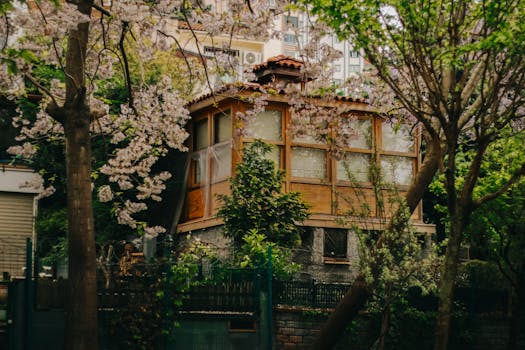
Urban Green Spaces: The Future of Outdoor Living in European Cities by 2025
Urban Green Spaces are becoming increasingly important in European cities, and it’s easy to see why. Urban Green Spaces provide a tranquil escape from the hustle and bustle of city life, offering a wide range of benefits for both physical and mental health. In this article, we’ll explore the future of outdoor living in European cities and how urban green spaces will play a vital role in shaping it.
The Importance of Urban Green Spaces
Urban green spaces are more than just parks and gardens. They are complex ecosystems that provide numerous benefits for the environment, human health, and the economy. Some of the key advantages of urban green spaces include:
- Improved air quality: Urban green spaces help to reduce air pollution by absorbing pollutants and producing oxygen.
- Climate regulation: Green spaces can help to regulate the urban microclimate, reducing the urban heat island effect and mitigating the impacts of climate change.
- Mental health benefits: Spending time in nature has been shown to have a positive impact on mental health, reducing stress and anxiety.
- Increased biodiversity: Urban green spaces provide habitats for a wide range of plant and animal species, helping to maintain biodiversity in urban areas.
The Future of Outdoor Living in European Cities
By 2025, European cities are expected to be even more densely populated, with a growing demand for outdoor spaces that promote health, wellbeing, and sustainability. Urban green spaces will play a vital role in meeting this demand, providing a range of benefits that will enhance the quality of life for urban residents.
Some of the key trends that will shape the future of outdoor living in European cities include:
- Increased focus on sustainability: Cities will prioritize sustainable design and management of urban green spaces, incorporating green infrastructure and innovative technologies to reduce environmental impacts.
- More emphasis on community engagement: Urban green spaces will be designed to foster community engagement and social interaction, promoting a sense of belonging and connection among residents.
- Integration with urban planning: Urban green spaces will be integrated into urban planning strategies, providing a network of connected green spaces that promote walking, cycling, and other forms of sustainable transportation.
Case Studies: Successful Urban Green Space Initiatives in European Cities
Several European cities are already leading the way in urban green space design and management. Some examples include:
- Stockholm’s Royal National City Park: This 27-square-kilometer park is one of the largest urban parks in the world, providing a range of recreational and ecological benefits for residents and visitors.
- Copenhagen’s Harbor Bath: This innovative urban beach has transformed a former industrial area into a vibrant public space, promoting water quality, biodiversity, and community engagement.
- Barcelona’s Superblocks Program: This pioneering urban design initiative has created a network of car-free streets and public spaces, prioritizing pedestrian-friendly and sustainable transportation options.
Conclusion
Urban green spaces are a vital component of sustainable and resilient cities. As European cities continue to grow and evolve, it’s essential that we prioritize the design, management, and maintenance of these spaces. By doing so, we can create healthier, more livable, and more sustainable cities that promote the wellbeing of both people and the planet.






